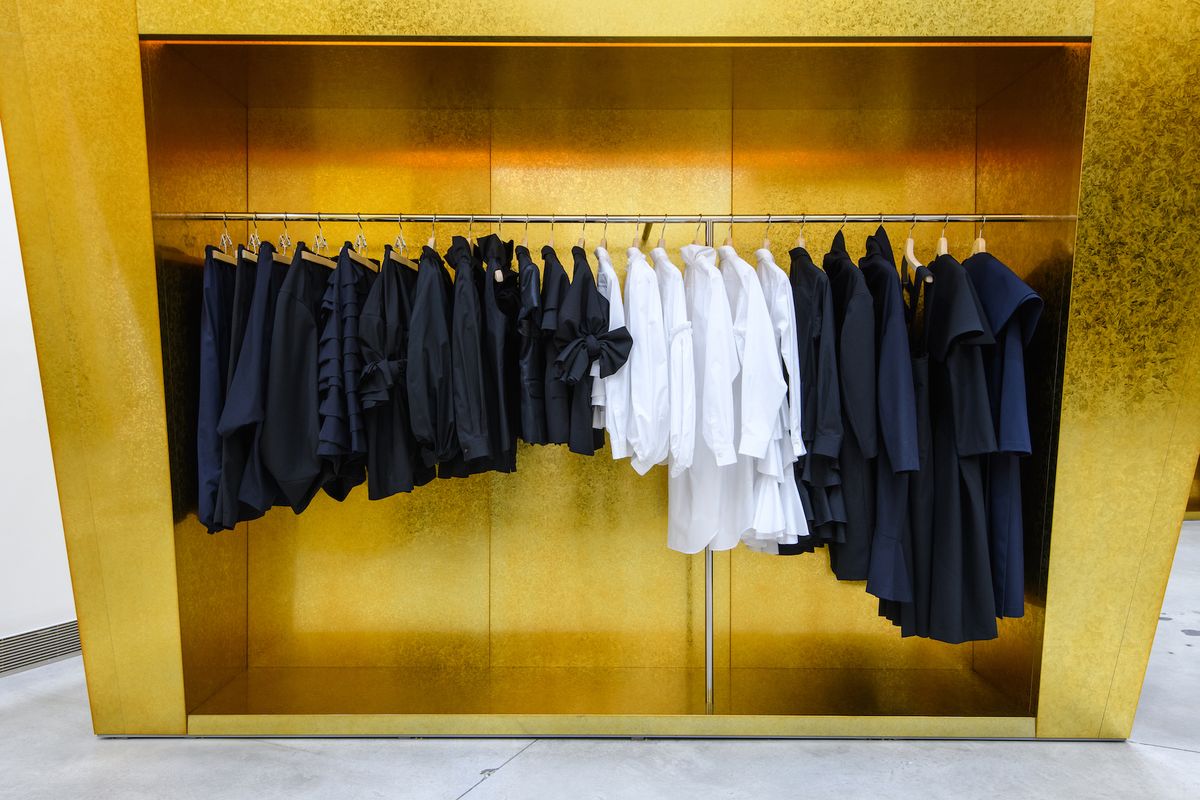The Increase of Online Buying: Finding Boutique Fashion at Your Fingertips
The Increase of Online Buying: Finding Boutique Fashion at Your Fingertips
Blog Article
Sustainable Fashion: Just How Eco-Friendly Clothing Is Shaping the Future of Style
As the garment industry encounters increasing scrutiny over its ecological influence, the increase of sustainable style uses an appealing alternative that aligns design with environmental obligation. Employing ingenious materials such as recycled fibers and plant-based textiles, alongside advanced methods like digital and 3D printing, developers are redefining what it implies to be stylish in the contemporary age. Concurrently, the growing popularity of upcycling and thrift culture is promoting a change in the direction of a circular economic situation. How does this movement truly affect the future trajectory of style, and what challenges lie ahead in its widespread fostering?
Ingenious Sustainable Products
As the style industry grapples with its environmental influence, ingenious lasting materials have emerged as an essential service for lowering environmental impacts. These materials not just reduce reliance on fossil gas but also decrease damaging chemical use and water intake.
Along with plant-based products, advancements in biofabrication have led to the growth of lab-grown fabrics. Mycelium natural leather, obtained from mushroom origins, presents a eco-friendly and functional alternative to pet leather. Its production results in considerably lower carbon emissions and water usage, making it a much more sustainable choice for designer looking for to straighten with eco-friendly practices.
Recycled materials are likewise getting traction, with polyester made from recycled plastic bottles representing a significant advancement. This advancement not only diverts plastic waste from seas and landfills yet additionally lowers power intake contrasted to creating virgin polyester. Together, these products emphasize the capacity for a much more sustainable garment industry, paving the way for eco aware style and production.
Eco-Conscious Production
Structure on the technologies in sustainable products, the style industry is also re-evaluating its production processes to better lower environmental impact. Key approaches include reducing water usage, decreasing carbon exhausts, and eliminating dangerous chemicals.
An additional crucial element is the decrease of toxic chemicals typically made use of in coloring and completing fabrics. Eco-conscious manufacturers are moving in the direction of plant-based dyes and waterless dyeing modern technologies, which not only secure local environments yet additionally boost worker security. Technologies like electronic printing reduce fabric waste and power intake, offering a cleaner alternative to standard techniques.
With the development of blockchain technology, business can now give thorough insights into their supply chains, making sure eco pleasant and moral techniques at each step. As the need for eco-conscious items grows, makers are obliged to introduce, making sure that the future of fashion is both trendy and sustainable.
The Increase of Upcycling
Upcycling, a transformative method in lasting style, involves artistically repurposing disposed of products into new, high-quality items. This innovative strategy not just minimizes waste however additionally decreases the need for raw materials, consequently minimizing the environmental effect of clothing production. By reconstructing and reimagining existing products, developers and fashion brand names are able to instill originality right into their collections while promoting ecological responsibility.

Furthermore, the upcycling movement has empowered independent developers and tiny services, who commonly lead in advancement as a result of their dexterity and imagination. By taking advantage of the abundant accessibility of unused products, these entities contribute to a round economic situation, demonstrating that fashion can be both fashionable and sustainable. With upcycling, the market takes substantial strides towards a more accountable and conscious future.
Thrift Society's Influence
The blossoming thrift culture considerably improves the landscape of lasting fashion, emphasizing the importance of conscious usage. This social shift urges consumers to welcome secondhand clothes, therefore decreasing the demand for brand-new garment production and reducing environmental effect. Second hand shopping not just expands the lifecycle of clothing but likewise decreases the carbon footprint connected with production, delivering, and disposing of clothing.
A crucial aspect of thrift society is its democratization of fashion. By using a wide range of designs from numerous periods at budget-friendly rates, second hand shops make style obtainable to a wider target market. This access fosters a sense of uniqueness and check out here creative thinking, as consumers mix and suit one-of-a-kind items to curate personalized wardrobes without adding to the fast fashion cycle.
Additionally, second hand society advertises circularity in fashion, lining up with the concepts of a circular economic situation. By recirculating garments, the cycle of waste is interfered with, and sources are conserved. This method sustains a change from a direct "take-make-dispose" design to a much more lasting structure. As even more developers and consumers embrace thrift society, the apparel industry is compelled to adjust, incorporating lasting methods to satisfy the growing demand for eco-conscious choices.

Future Trends in Style
Fashion's development is significantly shaped by technical developments and sustainability-driven initiatives. As customers become extra ecologically aware, the market is reacting with groundbreaking advancements that redefine the future of design. One famous fad is the rise of digital style, where virtual garments can be used in enhanced fact environments, dramatically lowering material waste. This change not only provides to the digital-savvy customer but additionally decreases the environmental footprint generally connected with garment production.
Furthermore, the combination of blockchain innovation supplies brand-new possibilities in openness and traceability, permitting customers to validate the sustainability qualifications of their clothing. boutique fashion. This ensures responsibility in supply chains and promotes honest sourcing practices. 3D printing is yet another development that guarantees to revolutionize manufacturing procedures by making it possible for on-demand manufacturing, thereby reducing excess stock and waste
As these modern technologies develop, they are positioned to transform the fashion landscape, combining style with sustainability. The future of fashion, consequently, lies in a seamless mix of innovation, advancement, and environmental hop over to here responsibility.
Verdict
The transformation of the apparel industry with sustainable techniques suggests a pivotal change towards ecological responsibility. The integration of cutting-edge materials, eco-conscious production techniques, and the embracement of upcycling and thrift society highlights a commitment to decreasing ecological footprints. As these practices get momentum, they redefine the market's story by focusing on ethical and lasting selections. This development not only straightens fashion with eco-friendly sustainability however additionally sets a criterion for future patterns concentrated on obligation and innovation.
As the fashion industry deals with raising scrutiny over its environmental influence, the rise of sustainable style supplies a promising alternative that lines up link design with eco-friendly obligation.As the fashion market grapples with its ecological influence, cutting-edge sustainable materials have emerged as a critical service for reducing environmental impacts. With each other, these products highlight the possibility for an extra sustainable fashion industry, paving the way for ecologically mindful layout and production.
Building on the developments in sustainable materials, the fashion industry is likewise re-evaluating its manufacturing processes to additionally lower environmental impact. boutique fashion.Upcycling, a transformative method in sustainable fashion, involves creatively repurposing thrown out products into new, premium products
Report this page